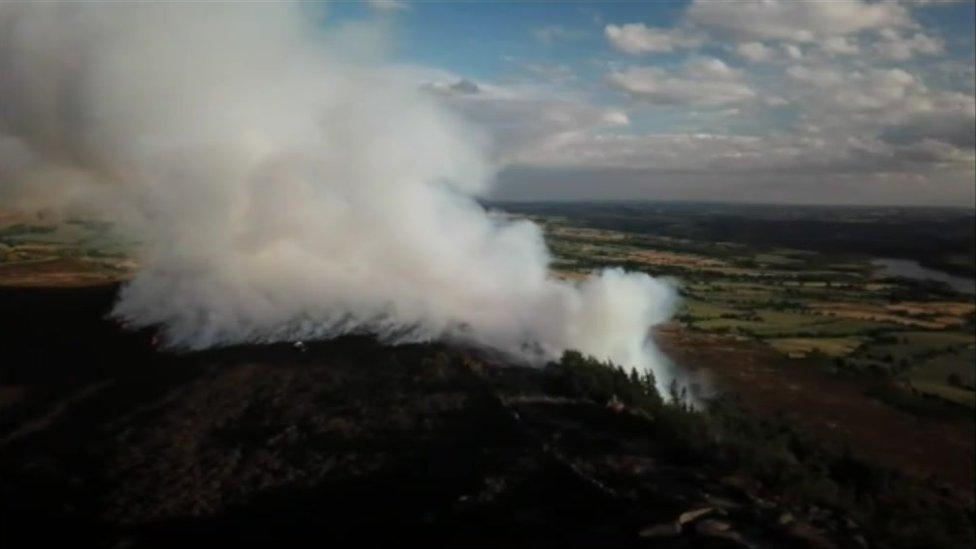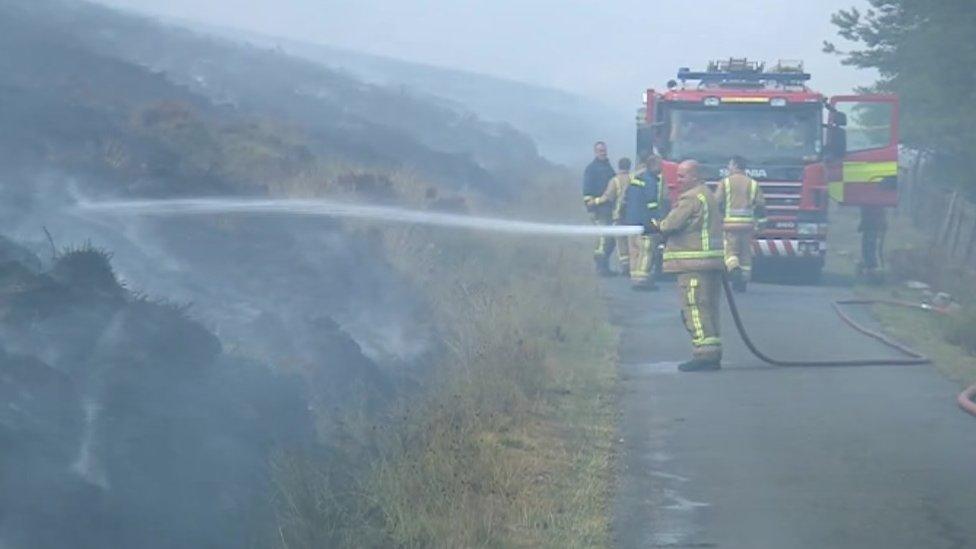Roaches recovery eight months after fire disaster
- Published

Drone footage of the fire from August last year
In August last year a devastating fire swept through the Staffordshire Roaches leaving around 20% of this important wildlife area blackened and lifeless.
Last week I was offered the chance to go back and see how nature is recovering. And sadly it isn't good news.
The Roaches, external is an extraordinary part of the Midlands landscape. High above Leek there are massive cliff faces sitting in moorland with a sprinkling of bog to add to the habitat mix.
It's a favourite with walkers, climbers and wildlife lovers. But sadly last year one of those visitors lit a campfire that they didn't put out properly.
The end result was a fire that raged for days and through a combination of weather and bad luck it didn't just burn the vegetation.
As the winds changed they kept the fire burning in one place so once the plants were gone the fire began to chew through the peat itself, to a depth of thirty centimetres in some places.
Not much recovery
Once I understood what had happened the fact the landscape shows so little signs of recovery makes more sense. Usually after a fire the seeds in the ground quickly germinate and the scorched earth starts turning green.
Here the affected areas are still black with little or no plant life as far as you can see and that's because the fire burned down into the group and killed off the natural seed bank under the surface.

Firefighters spent more than a week trying to get the fire under control
Worse the peat itself is danger of being swept away by rain.
For thousands of years the layer or vegetation has protected it, but now, reduced to ash by the fire, any heavy downpour will sluice the peat downstream and off the Roaches themselves.
For the last few months Staffordshire Wildlife Trust have been taking rocks up onto the site by helicopter to build hundreds of dams. They will hold water back and also all that valuable peat.
Fire risk remains
The next stage is getting a real handle on the damage done to wildlife and how best to proceed with restoration.
Soon there will be a bird survey, and the Trust are already talking about what species they might have to bring in themselves to kick start the restoration process.
The whole project could take decades.

Even now the areas affected by the fire show little signs of new life
Of course there's still plenty of the Roaches for us all to enjoy but these blackened chunks of desert remain heartbreaking, and even more so because it was all down to one person's carelessness with a campfire.
Right now the area is still really dry and with plenty of Easter visitors the Wildlife Trust are asking us all to be vigilant.
Only light fires and barbecues where they are allowed and to take special care when disposing of cigarettes.
Because this is a wildlife disaster we don't want to see happening again.